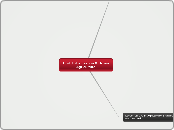Chapter 4:Managing marketing information to gain customer insights
Other marketing information and considerations
Public Policy and Ethnics
Misuse of research findings
Customer privacy
International Market Research
Marketing Research in Small Businesses
and Nonprofit Organizations
Customer insight
Formed by company to
Create value for customer
Collect information
Include functional areas
Better information and effective existing information
Difficult to obtain
Fresh and deep
Marketing information system (MIS)
Distributing and Using Marketing Information
Extranet:
provides information to
key customers and
suppliers
Intranet:
provides information to
employees and other
stakeholders
Analyzing and using marketing information
Customer Relationship Management(CRM)
Touch points:
1.Customer purchases
2.Sales force contacts
3.Service and support calls
4.Websites visits
5.Satisfaction surveys
6.Credit and payment interactions
7.Research studies
Developing marketing information
Marketing research
Implementing the research plan:
1.Collecting the information
2. Processing the information
3.Analyzing the information
4.Interpret findings
5.Draw conclusions
6.Report to management
Developing the research plan
Written research plan
Includes:
1.Management Problem
2.Research objectives
3.Information needed
4.How results will help
managements decisions
5.Budget
Spells out the specific research approaches,
contact methods, sampling plans, and
instruments to gather data
Research instruments
Mechanical devices:
1.People meters
2.Checkout scanners
3.neuromarketing
Questionnaires:
1.Closed-end questions
2.Open-end questions
Sampling plans
Nonprobability Sample:
1.Convenience sample
2.Judgement sample
3.Quota sample
Probability Sample:
1.Simple random sample
2.Stratified random sample
3.Cluster (area) sample
Contact methods:
1.Mails
2.Telephones
3.Personal
4.Online
5. Focus group
Online contact methods:
1.Internet Surveys
2.Online Panels
3.Online Experimentals
4.Online Focus Group
Advantages:
1.Low Cost
2.Speed
3.Highher response rates
4.Good for hard
to reach groups
Research approaches:
1.Observational research
2.Ethnographic research
3.Survey research
4.Experimental research
Outlines sources of existing data
Secondary data
Disadvantages:
1.Current
2.Relevant
3.Accuracy
4.Impartial
Advantages
1.Costs
2.Speed
3.Could not get data otherwise
Primary data
Planning Primary
Data Collection:
1.Research approaches
2.Contact methods
3.Sampling plan
4.Research instruments
Defining the problem and Research Objective
Causal research
Descriptive research
Exploratory research
Process
1.Defining the problem and research objectives
2.Developing the research plan for collecting information
3.Implementing the research plan
4.Interpreting and reporting the findings
Marketing intelligence
Internal Data
Assessing marketing information needs
Characteristics of Good MIS
user's Needs (50%)
MIS offerings (50%)
provide information for
external suppliers
marketing service agencies
resellers
suppliers
others manager
marketing









